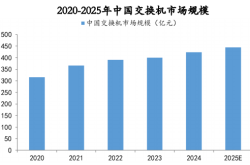Kimi and Doubao Focus on AI Search Entrances, Igniting the Lightweight Battle
![]() 07/21 2024
07/21 2024
![]() 674
674
Source | Bohu Finance and Economics (bohuFN)
The flames of the price war have finally reached OpenAI, with the official launch of GPT-4o mini, replacing GPT-3.5, at a cost of 15 cents per million tokens for input and 60 cents per million tokens for output. Prior to this, domestic large model manufacturers had already reduced the cost of experiencing large models to almost free.
Following the "Hundred Model War," more and more companies have realized that large models are merely "technology and capabilities." Only by utilizing this new tool to help industries solve practical problems can large models bring efficiency improvements at the business level. Essentially, this is the inevitable path to the "commercialization" of large models.
Since the beginning of this year, many large models have begun to focus on "landing," and AI native applications have also entered the lightweight battle. Recently, ByteDance's AI assistant Doubao and the large model unicorn Kimi successively launched browser plugin versions. As of July 15th, according to Chrome Store data, their downloads have exceeded 90,000 and 20,000, respectively.
While major tech companies have focused on developing native applications for niche industries, Doubao and Kimi have leveraged the plugin model, attempting to overtake in the race. Will this become an "excellent answer" to the commercialization of large AI models?
01 The AI Ecosystem After the "Hundred Model War"
After the emergence of large AI models, various companies rushed in, but ultimately, "the master leads the way, but cultivation depends on the individual." Industry insiders point out that at the end of the "Hundred Model War," only 3-5 large models are likely to remain, which has become an industry consensus. In the future, large models will serve as a few fundamental foundations.
According to incomplete statistics, by the end of April this year, over 300 large models had been launched in China, implying that most of these large model companies will be eliminated. Commercialization and monetization are issues that all enterprises cannot avoid.
On one hand, as public awareness continues to expand, both the capital market and customers are gradually becoming less enchanted by large models. This shift has transformed the initial "battle of the large models," which was focused on the blind pursuit of the scale and quantity of these models, into a more nuanced focus on their practical application and commercial value.
Companies are beginning to realize that having a large-scale AI model is not the ultimate goal; the key lies in effectively integrating these models into products and services to solve practical problems and create real commercial value.
Industry insiders believe that large model companies will ultimately explore commercialization and monetization through two major paths. First, more powerful enterprises will create high-quality general-purpose large models that can empower other enterprises as an open platform or become a "super app," following a dual-drive strategy of technology and products.
Second, transforming from a general-purpose large model to an application company, teams with model capabilities are more likely to optimize algorithms, models, and data, resulting in better application products and finding a niche in vertical fields.
However, regardless of the path chosen to explore commercial monetization, both require significant computational costs for training large models. Guosheng Securities has estimated that building a large model comparable to ChatGPT requires an investment of approximately 1 billion yuan to enter the market.
Moreover, training large models necessitates repeated rounds of data set processing, where computational power represents data processing capability. However, computational power must be based on sustainably available chips. Consequently, domestic large model players face difficulties in acquiring chips and soaring prices.
Amid rising costs, venture capital has become increasingly cautious. According to CB Insights' "2023 State of Artificial Intelligence (AI) Industry Report," the number of AI investments in China last year was approximately 232, a 38% decrease year-on-year; total financing was approximately $2 billion, a 70% decrease year-on-year, marking the lowest levels in five years for both funding amount and volume.
Finally, in addition to training costs, customer acquisition costs cannot be ignored, especially for "rising stars" like Kimi, where gaining market visibility is also a top priority.
According to Jingbao Network, an AI large model industry investor revealed that Kimi's customer acquisition cost is currently over 12 yuan. Assuming a monthly download volume exceeding 15,000, Kimi's daily customer acquisition cost is approximately 200,000 yuan.
Therefore, even industry unicorns like Kimi, which has secured multiple rounds of funding in just one year from investors including Alibaba, Sequoia China, and Meituan, dare not neglect monetization in the face of high computational and customer acquisition costs. For example, in May this year, Kimi tested a small-scale paid tipping feature.
02 AI Plugins as a "Smart Move"
It is evident that the large model companies that ultimately survive will excel in financial strength, technological innovation, business models, and storytelling abilities.
Internet giants, already super apps, have a head start, but it remains to be seen whether more large model unicorns will overtake by accurately targeting niche demands.
Regardless of whether the surviving companies choose the "super app" or "vertical app" path, the core is "application," and the key lies in how to get users to "use it." Especially when large model products have not yet become "necessities" in work and life, every move requires careful consideration.
By starting with lightweight plugins, Kimi and Doubao have clearly made a "smart move." At the recent 2024 World Artificial Intelligence Conference, Baidu founder Robin Li stated that he favors the direction of "intelligent agents" for generative AI. Intelligent agents, like websites in the internet era, will emerge in large numbers to form an ecosystem.
What are "intelligent agents"? According to Robin Li, intelligent agents can not only converse but also reflect and plan. If realized, they would indeed be the optimal direction for AI application development.
However, the ideal is abundant, but the reality is lean. At present, the success rate of AI intelligent agents, both domestic and overseas, in completing designated tasks is less than 20%.
Just as the concept of "autonomous driving" emerged, while the vision was beautiful, the technology had not yet achieved "one-step success." Therefore, starting with intelligent assisted driving can gradually drive the overall industry development.
Currently, AI plugins serve as another "intelligent assisted driving." Last year, Baidu's Lingjing Plugin Platform attracted 27,000 developers to apply for admission within just one month. Baidu Wenxin 4.0 also released eight plugins, including Wenyi Liuliuying (text-to-video) and Shuotu Jietu (image captioning).
Robin Li noted that plugins are a special type of AI native application, with the lowest threshold and easiest to use, enabling many enterprises to leverage large model capabilities more conveniently and quickly.
Now, Doubao and Kimi are also focusing on plugins, specifically browser plugins. Currently, not only are downloads encouraging, but user reviews are also positive.
Kimi's browser plugin emphasizes lightweight search, offering two major functions: highlighting questions and summary generation. Both aim to address user questions and summary needs, helping users quickly comprehend article content.
Doubao's browser plugin offers more diverse functions, automatically organizing search results with jump links, summarizing video content and extracting highlights, generating images from text, and customizing toolbars.
Additionally, overseas player Monica has a browser plugin with writing assistance, enhanced search, image generation, and other functions.
It is clear that Kimi, Doubao, and Monica represent three types of players in the current AI large model landscape: large model unicorns, internet giants, and AI startups. All are focusing on the plugin domain, but why?
On the one hand, as Robin Li stated, plugins are the easiest AI native applications to use. Compared to traditional application development processes, plugins provide services through interfaces, making them the best carrier for AI application innovation.
For large model companies still exploring application scenarios, leading the way with plugins can reduce trial and error costs, enabling them to operate lightly and quickly obtain market and user feedback, a lightweight entry point.
On the other hand, in this lightweight battle of plugins, everyone chooses to start with browser plugins due to the rich usage scenarios behind browsers. While smart devices like phones may have higher usage frequency and duration, browsers cover work, study, entertainment, and other scenarios, making it easier to quickly gather customers. With a certain user base, the opportunity for monetization arises.
Finally, browser plugins complement AI assistants like Kimi in usage scenarios, further amplifying their advantages. Given that Web-based AI plugins are still a "virgin land," cultivating user habits is even more crucial.
However, as large model companies hope to break through the commercialization path with plugins, they will face direct competition. Taking browser plugins as an example, creating such a product is not technically difficult; the key lies in the user experience it brings.
Currently, each company has its own approach. Doubao emphasizes comprehensiveness, while Kimi focuses more on simplicity and conciseness. In an interview with Daily Economic News, Kimi stated that to make a good browser plugin, simplicity and ease of use are crucial, as is the model's capability.
03 Commercialization Remains a "Tough Nut to Crack"
The product experience and large model technology mentioned by Kimi are also issues that large model companies must address during the "commercialization" process. After the "Hundred Model War," there has been a debate about the paths to commercialization for large models: ToB or ToC.
Since the B-end market already has certain market demands and application scenarios, choosing the ToB path means faster scale application. For large companies, current large model technology is sufficient. However, because everyone aims for this lucrative market, the B-end market has already seen price wars, significantly compressing profit margins.
In contrast, the C-end market has significantly more imagination space. AI in the ToC market aligns better with the growth patterns of consumer internet, but it requires a highly attractive blockbuster application to lead the market, testing enterprises' product optimization capabilities.
Currently, both domestic and foreign large model companies have taken "small steps" towards commercialization. On the B-end, enterprises integrate AI technology into traditional products and offer vertical customization services. Baidu Wenxin Yiyan serves 85,000 enterprise customers, and Alibaba Tongyi Qianwen serves 90,000.
On the C-end, OpenAI and Midjourney offer paid subscription models to individual users, while domestic large models like Baidu Wenxin Yiyan and iFLYTEK Spark have launched paid models.
However, the path to profitability for large model companies remains long. Taking industry leader OpenAI as an example, in the first six months of this year, its annual recurring revenue grew to $3.4 billion. According to the FutureSearch report, ChatGPT's member subscription revenue accounted for more than 50%, while API revenue skewed towards enterprises and developers, accounting for only about 15%.
Nonetheless, despite OpenAI's rapid revenue growth, it is still in a loss position due to the high costs of building and running the model. If the leader is in this situation, domestic large model companies can only try to "monetize" in various ways.
For example, ByteDance has turned to AI+hardware, with OPPO's Xiaobu Assistant and Xiaomi's Xiaoai Classmate already integrated with Doubao's large model services. Baidu is exploring the commercialization path of Wenxin Yiyan combined with advertising, but the specific binding form is still under discussion.
Internet giants, leveraging their traffic advantages, are embracing more possibilities, but the time left for large model unicorns is limited. As large model plugins continue to enrich and develop, they will help users quickly access large model capabilities in different scenarios, eventually building an ecosystem barrier centered on plugins.
For developers to achieve low-threshold AI application development, they must rely on the capabilities of large models. The increasing number of developers can further promote the prosperity of the application ecosystem, thereby strengthening people's reliance on large models. In this regard, internet giants like Baidu and ByteDance are already ahead of the curve.
If AI applications are the "future" of large models reaching users, browser plugins are merely an "exploration" opportunity. How large a platform they can become depends on whether large model companies can continuously provide value and innovation for users and developers.
Ultimately, whether it will be internet giants "following the rules" or unicorns and startups bringing surprises, we will have to wait and see.
*The cover image and illustrations belong to their respective copyright owners. If the copyright holders believe that their works are not suitable for public browsing or should not be used free of charge, please contact us promptly, and this platform will immediately make corrections.








